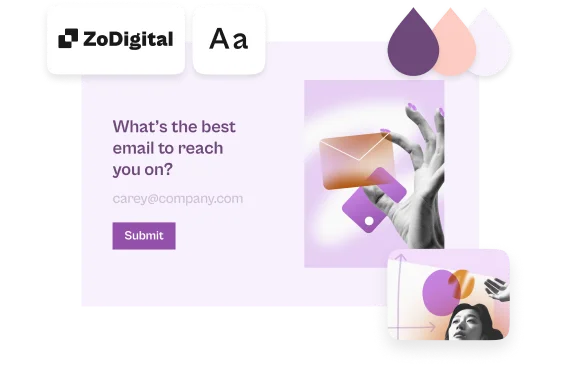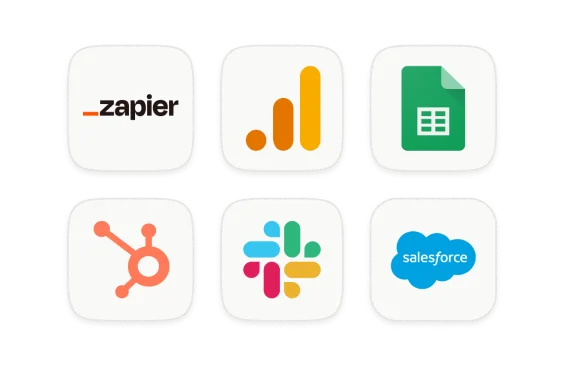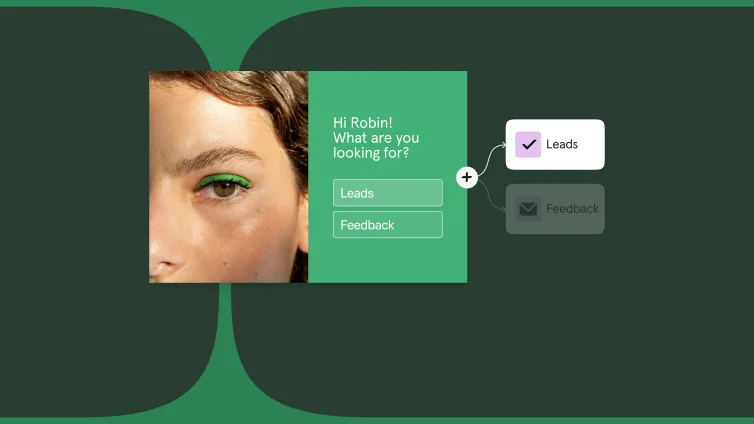Contents
01 How survey research comes in handy02 The five stages of survey analysis 03 What tools do you need for survey analysis?04 You don’t have to be an analytics geniusYou might have guessed by now that we’re pretty into surveys around here. They’re kind of our thing.
We get fired up about beautiful surveys. Or awesome ways to use surveys. Or surveys that are just a little bit…well, weird. (Bubbles, anyone?) We have a whole slack channel dedicated to the beautiful typeforms we find in the wild.
But what’s the point of surveys, really?
Surveys are a way of finding answers to a question so you can make a decision. And that requires (whisper it) survey data analysis.
Latest posts on Tips
But not to worry—survey analysis is actually pretty simple. If you can make a pivot table, you can analyze a survey.
Here’s everything you need to know to transform your survey results into actionable insights.
How survey research comes in handy
To be honest, survey data analysis is more of an art form than a science. Survey data rarely points to specific findings with 100% certainty. You’ll often have to interpret results, decide what to do with unexpected insights, and sometimes conflicting results. If you’re trying to find out whether users would prefer your product to be blue or green, you won’t usually get 100% of people telling you they’d like it to be blue. Typically you’ll get a mixture of blue voters, green voters, and a surprising number of people who’d prefer purple.
What you can get—if you’ve done things right—is more information to guide your decision until you’ve compiled the information you need to confidently go ahead.
We use extensively use typeforms to guide a whole host of decisions, spot trends, and get to know our customers better. Here are just a few of the surveys we have running at any given moment:
Ongoing NPS® surveys
Net Promoter Score® surveys let you track how likely your customers are to recommend your products and services, letting you keep an eye on how happy your customers are. We have an NPS® survey running all the time at Typeform. This way we can do a quick pulse check on how we’re doing.
Want to make your own? Here’s a handy NPS® survey template.
Customer support review surveys
At Typeform, we’re all about making positive customer connections at every touchpoint, and we keep a close eye on feedback to see how we’re doing. After every interaction with customer support, we ask our customers about their experience with the agent.
Want to start doing the same thing? Here’s a customer service satisfaction survey template.
Customer success story surveys
We love hearing how our customers use Typeform. A customer success survey does two things:
It helps us get to know our customers better and spot ways we could help them more.
It’s a great source of customer stories that we can use to create useful, inspiring content.
Want to tell us more about how you use Typeform? Here’s the survey.
Concept testing
Before developing new features to Typeform, we like to consult our customers to ensure our ideas align with their needs. We use concept testing surveys to check our assumptions and find out if we’re missing anything.
Here’s a market research survey template you can use to confirm your product decisions with your customers.
Churn survey
It’s never a good feeling when customers leave—but it’s much worse if you don’t know why. We make sure we always ask (nicely!) why someone decided to stop using Typeform. That way, we can be proactive about it, address any issues, and nip churn in the bud.
Here’s a free churn survey template for you.
Surveys aren’t just helpful in making product and business decisions. They can also be a great way to check in with your employees and make sure everyone’s happy. A couple we use ourselves regularly:
Employee event feedback surveys
After we’ve done an internal event or off-site, we want to hear from our attendees about how it went. Direct feedback gives us the opportunity to continuously improve the experiences we provide for our employees.
Here’s a free event survey template to evaluate your own internal events.
Employee engagement surveys
Nothing is more crucial to business success than engaged, dedicated employees. To keep a pulse on employee well-being, we run regular employee engagement surveys. We seek to review employee satisfaction levels and make sure Typeform remains a great place to work.
Want to survey your employees to find out how engaged they are? Here’s a handy little template for you.
The five stages of survey analysis
Forms and surveys can be a fast and straightforward way to test business ideas.
Here’s how to analyze your survey results so you can make better decisions more quickly.
1. Set yourself up for success
If you simply send out your survey, download a massive file with the responses, and just start digging around looking for a pattern, you’ll be there for hours. If you want to easily analyze and apply your survey results, you need to design your survey with that end in mind.
This means:
Articulating very clearly the goal of your survey before you write it
Planning out your survey in Word or Google Docs—and getting every stakeholder to sign off on it—before you begin building it in Typeform
Giving some thought to how you’re going to present your findings before you start to collect your responses
2. Clean the data
Once you’ve published your survey and the responses are rolling in, it’s time to dive into analyzing your results. But before you can do that, you need to prepare your data for analysis. In particular, watch out for:
Flat-liners—people who have gone through the survey and selected either the lowest or the highest end of the scale for every answer
Speeders—people who’ve whizzed through survey questions too fast to have given quality answers
Anomalies—responses that lie wildly outside the normal range, suggesting that they’re errors or typos
You’ll need to decide what to do with these data points. Will you include them, knowing they’ll skew your results? Or exclude them, knowing you’re introducing a certain amount of bias into your analysis by discounting certain responses? Remember the whole “art-not-science” thing?
3. Analyze and visualize the data
Now for the fun part. Once you’ve cleaned up your data, you can analyze the numbers and see what they’re telling you.
This is usually easier to do as a series of visualizations instead of just looking at a list of numbers. Simple ways to visualize survey data include:
Pie charts
Pie charts show how the total number of responses is divided between distinct categories. These are best when you don’t have too many categories to show (typically less than six).
Bar charts
If you want to show more than six categories or data that’s not a percentage of a whole (like company size), bar charts are a better option.
Word clouds
If you’re analyzing open-text questions, you might want to visualize them with word clouds. This type of data visualization displays the most used words in a text, with the most frequently used words appearing the biggest. It’s a handy way to show what terms keep popping up in open-text responses.
4. Tell a story
When it comes to presenting your findings, don’t just pull out a whole bunch of bar charts and call it a day. While you might feel inclined to share your findings in the order you asked the questions, that won’t be very useful for decision-making purposes.
Instead, try to organize your results to tell a cohesive narrative and reflect the original question you were trying to answer. Data that tells a story is more easily remembered and understood. Because you get a clearer idea of what you’re looking at, it’s also much easier to use a data narrative to make decisions.
5. Dig deeper
By this point you might feel like you have enough information to answer your original question. In which case, great! Job well done.
However, you might look at your results and feel like you’re still not confident enough yet. Maybe you find yourselves with new questions you’d like to ask and understand. Or you've got some unexpected results, and you want to check them to make sure they’re not just a reporting error.
At that point, it’s totally fine to go back and do another survey. But you might want to move into a different research format. If this is the case, you could follow up on your survey findings by conducting a few qualitative interviews to go into more detail.
For instance, you might survey your customers about how they use your email marketing software. You notice that the majority of them use it to send weekly newsletters. But maybe this finding brings you more questions. Do they use it for weekly newsletters because that’s what it does best? Or is it because that’s what they mostly do with their email?
That’s a great moment to follow up with your survey respondents who use it for newsletters. Ask if you can interview them to find out more about why they use it that way and how you could make it easier for them to use.
What tools do you need for survey analysis?
Once you’ve run your Typeform survey, you’re going to (hopefully!) have a ton of responses to go through. Here are a few of the tools we use at Typeform to analyze survey data, spot patterns, and inform our decision-making:
1. A spreadsheet
Often, a good old Google Sheet or Microsoft Excel spreadsheet will be enough to analyze your data. You can send your typeform responses straight to Google Sheets or Excel to manage your data in one place and transform it into colorful charts or graphs with our pre-built integrations.
With the integration in place, your spreadsheet will automatically sync as results come in. You can then use formulas and conditional formatting to create graphs, transforming raw data into digestible insights. At Typeform, we like Google Sheets because it’s great for real-time collaboration, so the whole team can jump in and add comments or make changes.
2. A business intelligence (BI) tool
If you’re ready to take things to the next level, you might also want to add a business intelligence platform. These tools are great for doing things like:
Creating automated dashboards that let you track trends over time
Making more sophisticated data visualizations
Connecting data from multiple sources to get the whole story
Again, for most surveys, you won’t need this level of complexity. But BI tools work well if you want to get stuck in the numbers. We use Google Looker Studio for quantitative analysis, for example.
3. A qualitative analytics tool
Tools like Google Looker are great for crunching the numbers, but if you’re mainly collecting open-text responses, you need a qualitative analytics tool in your tech stack. These tools help you automatically spot trends in responses, saving you time labeling and categorizing them.
We have integrations with some great options, including:
Or you can just use Zapier to automatically move your responses from Typeform to your BI platform of choice.
You don’t have to be an analytics genius
The point we’re trying to make here is that you don’t need a PhD in math to analyze survey data. Surveys won’t tell you the definitive answers to your business questions, but they can give you exactly the data you need to make an informed decision.
If you’d like to learn more about how to analyze survey data, take a look at our guide to survey data analysis.






